HELIOS is a large hemispherical outdoor simulation chamber (volume of 90 m3) positioned on the top of ICARE-CNRS building in Orléans (France). HELIOS is dedicated mainly to the investigation of the gas phase chemical processes and radical chemistry under different conditions (sunlight and dark). It is equipped with a large set of instrumentation: in-situ FTIR (up to 500 m path length), PTR-ToF-MS (Ionicon 8000), Aerodyne ToF-CIMS, ATD-GC-MS, UHPLC, IC, SMPS, LOPAP (for HONO), Aerolaser 4021 (for HCHO), Spectroradiometer, Monitors (O3, NOx (NO + NO2), SO2), CRDS (NO3 & N2O5) …. Other instruments are under development.
HELIOS is a large hemispherical outdoor simulation chamber positioned on the top of the ICARE-CNRS building at Orléans (47°50’18.39N; 1°56’40.03E). The chamber is made of FEP film (250 μm thick) ensuring more than 90 % solar light transmission. The chamber is protected against severe meteorological conditions by a mobile protective housing. HELIOS is dedicated mainly to the investigation of gas-phase processes and radical chemistry under different conditions (sunlight and dark).
Large volume: 90 m3 : diameter : 6 m, height 3m, Projected horizontal surface area 55 m².
Low Surface / Volume ratio: 1.2 m-1
Low concentrations: in the order of ppb
Ambient temperature
Pressure: atmospheric (ultrapure air)
Relative humidity: variable (0 up to 80 %)
A laboratory of 150 m2
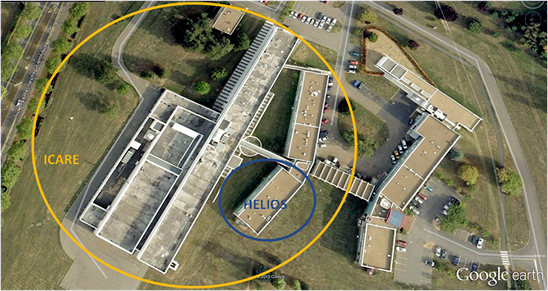
Figure 1: Google earth screen shot of ICARE laboratory before installation of HELIOS (HELIOS: 47°50’18.39N ; 1°56’40.03E)
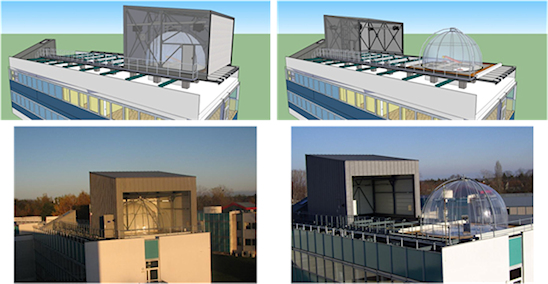
3D view (top) and picture (bottom) of the roof of the building with the chamberwhen the Light Box is closed (left) and open (right)
The protective housing can be shifted in less than 2 minutes from one side of the roof to the other to expose the chamber to the full natural irradiation. A silent block stops the vibrations, caused by the motion of the protective housing, to be spread to the building. In addition, in order to prevent the vibration to be spread to the chamber, the ground of HELIOS has been raised by a few centimeters from the metallic assembly supporting the housing. The chamber is mounted on an anti-vibration structure, which is a superimposition of a special IPN structure, directly fixed on the building, of industrial grating and, on top, of wood conglomerate panels.
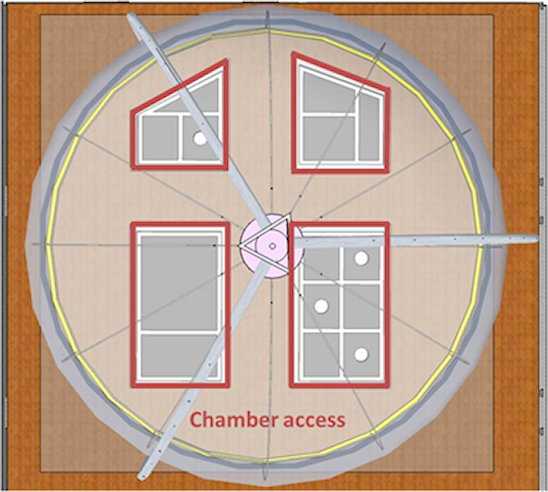
Schematic view of the chamber from above
The technical components of the chamber
The technical components represent all the equipment necessary to conduct repeatable and reliable experiments. They include the air purification system, the injection system, the mixing systems inside the chamber. These components are detailed below.
1.3.1. Air purification system
An air purification system has been installed to fill HELIOS with dry pure air. The system, provided and installed by Laplagne Fluid’Industries (Bordeaux, France), is composed of an oil free compressor, an air dryer and purifier. Details of the equipment are given below in the Table. Briefly, approximately 390 m3 of oil free air is obtained every hour from ambient air pressurization (at 10 bar) by the oil free compressor. The air is dried through a dryer, with an air flow of 420 m3 h-1. The air purifier eliminates all the contaminants (hydrocarbons, methane, carbon monoxide, O3, NOx, SO2, H2S, COS, …) and reduces their concentration levels to less than 1 ppb.
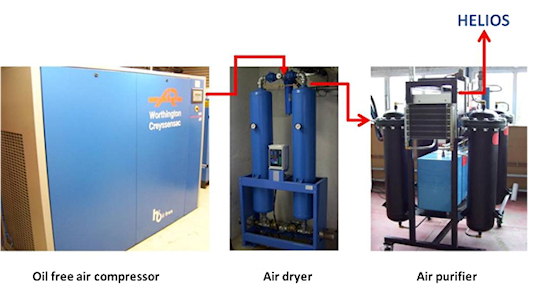
Air purification system
Technical characteristics of the elements composing the air purification system
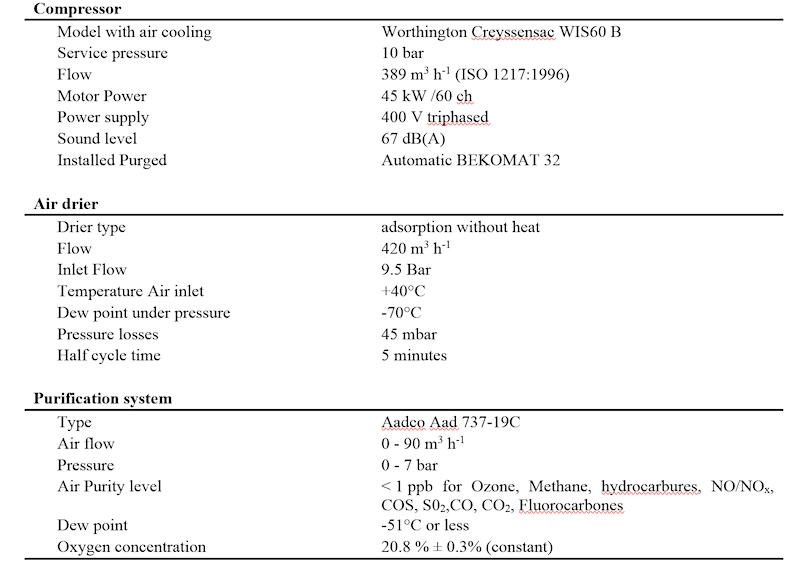
Injection system
Different methods are used to introduce the chemicals into the simulation chamber, whether they are liquid, gaseous or solid.
Compounds that are liquids under ambient conditions are introduced into the chamber by placing a known volume in a glass-made bubbler using a syringe. Purified dry air is then blown through the bubbler, leading to the volatilization of the compounds and their transfer to the reactor. If needed, the bubbler is gently heated using a heat-gun to facilitate the volatilization of the compounds.
Gaseous compounds are introduced into HELIOS using a 4.84 L stainless steel cylinder: the cylinder is filled with a known pressure of the compounds and then flushed with pure dry air.
Ozone is generated from the electrical discharge of O2 by Pen-Ray® Mercury Lamps (Trailigas®)
Mixing system
To ensure a rapid mixing of the compounds, two fans are installed inside HELIOS. Opposite each other, they both run at 20 Hz.
Analytical Instrumentation
In order to perform the most exhaustive studies of the atmospheric processes, HELIOS is equipped with a wide and complementary range of analytical instruments. A combination of in-situ, on-line and off-line instruments makes the characterization of the gas- and particulate phases possible while monitoring the meteorological parameters.